Indoor Plants That Don’t Need Sunlight (With Houseplant Pictures)
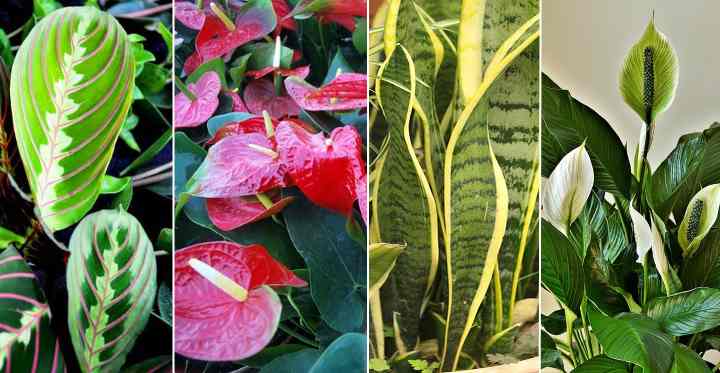
Many houseplants grow well without sunlight—or, at least in low-light conditions without direct sunlight. Many tropical plants adapt well to indoor conditions because they naturally grow in environments where there’s not a lot of light. Some beautiful easy care indoor plants survive with a minimal amount of natural light that is supplemented by artificial light.
Some of the best plants to grow indoors are natural shade-loving plants. While they need some natural light, they also grow under fluorescent light, LED lights, and other indoor light sources. Some plants grow well in offices, bathrooms, rooms with no windows, or places that are best described as dim and dull.
In this article, you will learn about many low-light plants that don’t need a lot of sunlight to survive.
Indoor Plants that Don’t Need Sunlight
There are a number of easy care plants that need (almost) zero sunlight – many unique houseplants grow indoors without much sunlight at all. In fact, many low-light plants prefer shade and dim conditions rather than direct sunlight.
Some of the best ten indoor plants that grow without sunlight are:
- Bromeliads—These indoor plants can grow with only artificial lighting.
- Snake plants—Excellent houseplants for rooms with little natural light.
- Calathea plants—Occasional sunlight can help keep foliage colorful and exciting.
- Peace lilies—Direct sunlight isn’t good for their leaf color, but they still produce flowers in low-light.
- Cast-iron plant—This hardy green leafy plant grows in any kind of light or shady environment.
- Golden pothos for hanging baskets—An excellent choice for a trailing vine plant where light is at a minimum.
- Dragon tree—Colorful foliage where there isn’t much sun – it is the choice feature of this low-light, low-maintenance plant.
- Monsteras—Species of Monsteras can tolerate low light and are trendy houseplants in modern homes.
- Parlor palm—This aesthetic plant brings the tropics to any room or office where you only have artificial light or minimal natural light.
- Prayer plants—These easy-care plants grow well in moderate light and don’t like too much sun.
Can A Plant Survive Without Sunlight?
Of course, every indoor plant—even low-light plants—need some light to survive. Plants take energy from light—especially the sun—to get the food they need to survive. Scientists have found that even artificial light, such as the kind in offices and rooms without windows, can produce enough light for plants to survive. (1)
Unfortunately, houseplants can’t grow in complete darkness. Even in extreme low-light conditions, most plants need some light—if only occasionally.
What Happens When A Plant Does Not Get Sunlight?
Every plant that grows indoors and outdoors has its own light requirements. You can tell if a houseplant isn’t getting enough sunlight because it starts to grow toward the nearest light source. They may become ‘leggy’ and begin to grow abnormally long stems as they ‘reach’ for light.
Other plants may start to lose their leaf color if there’s not enough sunlight or artificial indoor light. However, other plants don’t need too much light and grow well in dimly-lit rooms.
The Best Houseplants that Don’t Need Sun
Let’s look in more detail at some of the best potted plants to grow indoors where getting enough natural light is challenging.
Bromeliads
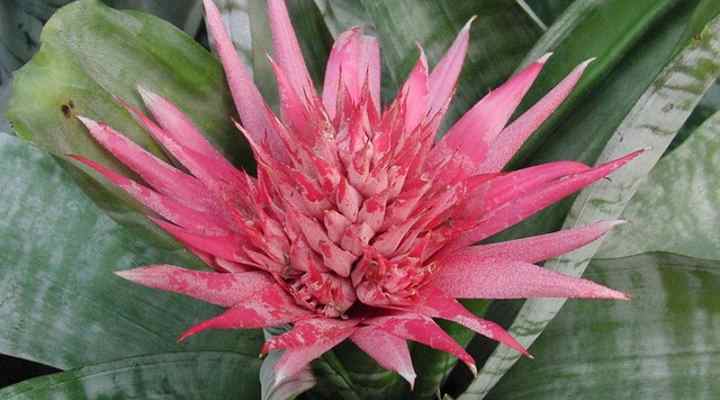
In the picture: silver vase bromeliad (Aechmea fasciata)
Bromeliads can tolerate almost zero sunlight and are still able to produce attractive flowers. You could even have this plant in a bathroom or office where there is only fluorescent lighting. Being a type of tropical plant, all species of bromeliads grow well in average room temperature.
Bromeliad plants—of which there are over 3,500 species, including pineapples—have broad arching leaves. Showy, colorful flowers emerge from the center. If you are looking for a cool and unusual plant to grow in medium to low light, choose the silver vase bromeliad.
Snake Plant (Sansevieria)

Able to grow in dim and meager lighting conditions, snake plants are the perfect indoor plant where sunlight is scarce. Snake plants—also called ‘mother-in-law’s tongue—have broad pointed succulent leaves that grow upward. The leaves are often arranged in a rosette shape with some species have foliage that rises straight out the ground.
Snakes plants are straightforward to care for and are on the list of plants that don’t need much water. You can leave snake plants in a shady corner and forget about them, and they will still grow well.
Calathea
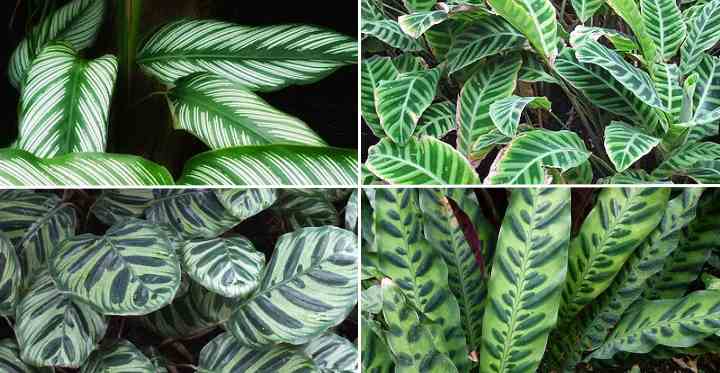
In the picture from top left clockwise: calathea ornata (Pinstripe plant), Zebra Plant (Calathea zebrina), Rattlesnake Plant (Calathea lancifolia) and Calathea makoyana (Peacock plant)
Also called rattlesnake plants or zebra plants, all types of calathea belong to the low-light category of hardy houseplants. Calatheas are well-known for their beautiful, colorful foliage and broad showy leaves. Calathea plants require medium care—all you need is high humidity, and keep them in average room temperatures.
Although most species of calathea don’t need a lot of light, their foliage will be more vibrant when the plant grows in bright, indirect sunlight.
Prayer Plant (Maranta)
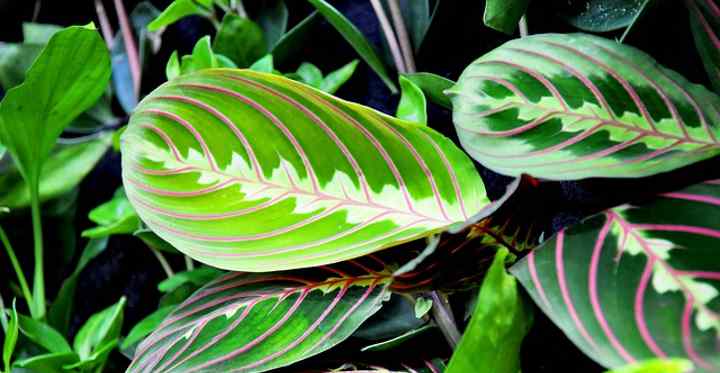
Prayer plants are related to calatheas and—just like their cousins—survive well indoors where light is minimal. Of course, being a tropical plant with vibrant green foliage, prayer plants grow better in bright light. However, you don’t need to worry if they are in a dimly-lit room or office.
The lack of light may affect the unique feature of prayer plants—this is the way their leaves fold together in the evening, similar to folding hands together to pray.
ZZ Plant (Zamioculcas)
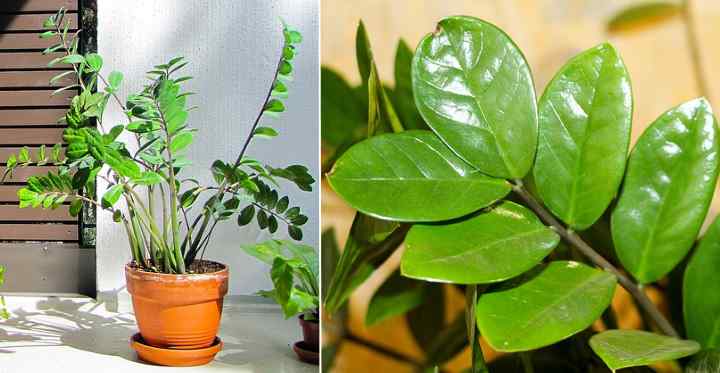
ZZ plants are excellent indoor plants for rooms and offices with no windows. The occasional light from fluorescent or incandescent bulbs is usually enough for this hardy plant. You can place the ZZ plant in a dark corner or north-facing room without affecting its growth.
The ZZ plant is one plant that seems to shy away from sunlight. If ZZ plants—also called Zizi plants or Zanzibar Gem—get too much light, you will notice that their glossy green foliage starts turning yellow.
Begonias

Begonias are houseplants that are extremely easy to look after and don’t need a lot of sunlight or artificial light to grow. Many species of begonias have fascinating foliage with various colors and patterns. When choosing a type of begonia—there are over 1,800 begonia species to choose from—make sure that the particular plant grows in medium to low light.
Begonias are also excellent plants for a closed terrarium where they continue to grow under the shade of other tropical plants.
Dumb Cane Low-Light Plants (Dieffenbachia)
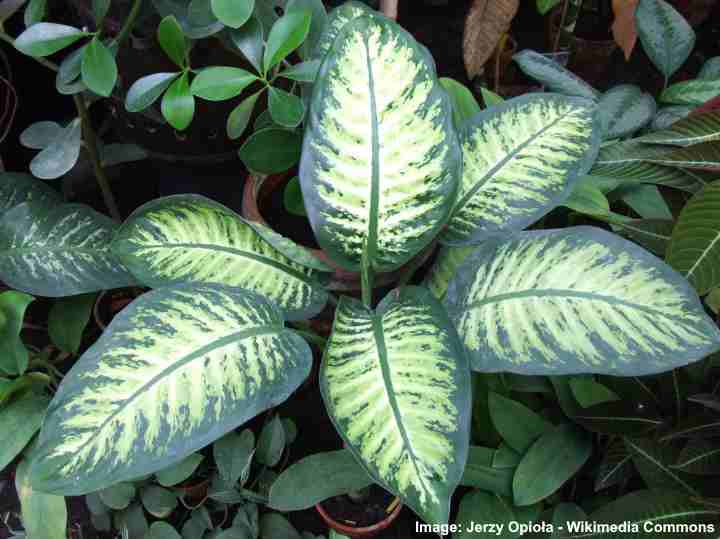
Dieffenbachia cv. ‘Bausei’
You can grow a dumb cane plant in any area of your home where there is poor sunlight. Dumb cane is one of the best indoor tropical foliage plants with large leaves. Its bright green and white variegated leaves can brighten up a dim corner or look attractive on an office desk. This hardy plant can also grow well in bright, indirect light where growth is more vigorous than in low light.
A word of caution: dumb cane plants are toxic, so keep them out of reach of dogs, cats, and curious children.
Parlor Palm (Chamaedorea elegans)

Parlor palms are one of the few indoor types of palm trees that don’t mind being kept in the dark sometimes. These aesthetic palm plants have lush, bushy green foliage and slender bamboo-like stems. Because these tropical indoor houseplants grow up to 6 ft. (1.8 m), they are excellent for rooms and hallways where light is minimal, or only where there is only artificial light.
Placing a parlor palm in a brighter area will encourage more rapid growth. However, remember that these indoor palms prefer filtered sunlight.
Pothos for Indoor Hanging Baskets (Epipremnum aureum)
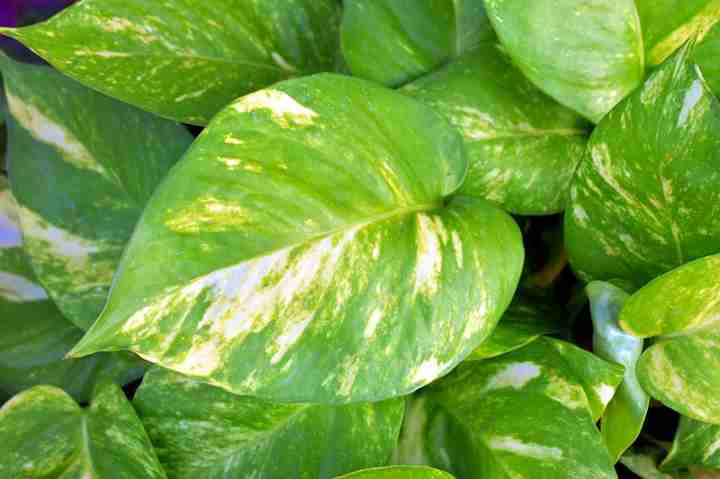
In the picture: Golden Pothos (Epipremnum aureum)
If you are looking for an indoor plant that hardly needs any light, then pothos plants are an excellent houseplant choice. These houseplants have long trailing vines that grow well in hanging baskets. You can also grow them in containers and place them high up on a shelf where there’s little light.
If possible, make sure your plant gets medium light from time to time. The occasion light helps to keep the variegated green and yellow leaves bright and vibrant. However, even when kept in dark places, the leaves on the long stems still stay green.
Philodendron

Other low-light indoor plants for hanging baskets are species from the family Philodendron. These tropical plants naturally grow on dense forest floors where there is hardly any light. When growing as a houseplant, keep the plant in partial shade to maintain its bushy appearance. Low to medium light helps prevent the stems from becoming too leggy and unkempt.
Grow in pots or hanging baskets in a temperature range between 59°F and 64°F (15°C – 18°C), keep the soil slightly moist, and in a medium to low light area. They can survive dark rooms and offices, but they tend to grow straggly stems.
Chinese Evergreen (Aglaonemas)
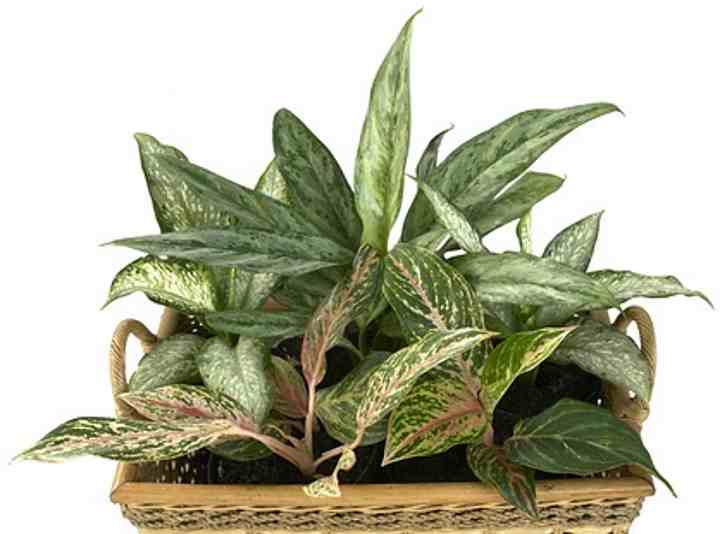
Excellent for beginners, Chinese evergreen plants can live without sunlight and aren’t harmed in shady conditions. These popular houseplants have fantastic bright foliage—just what you need to enliven a dim corner of any room. These indoor plants need protection from the cold—must be above 59°F (15°C)—and well away from direct sunlight.
Apart from being able to survive in almost zero sunlight, Chinese evergreen plants are on the list of plants that help clean toxins from the air.
Cast Iron Plant (Aspidistra elatior)
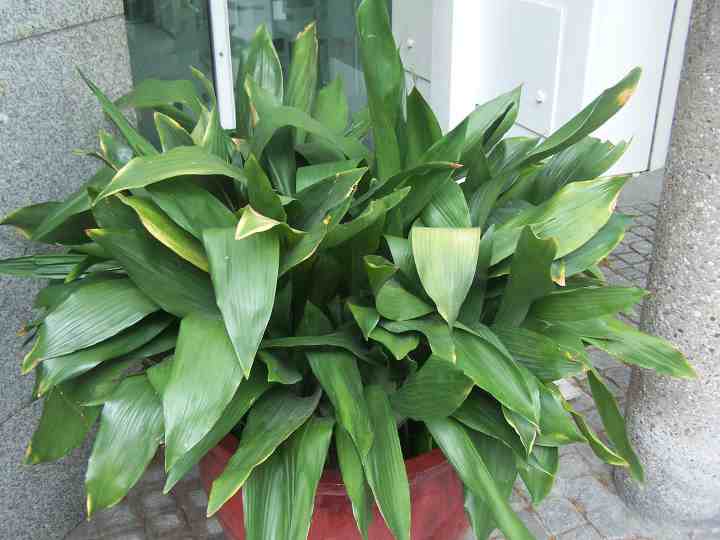
The cast iron plant gets its name because it is almost impossible to kill, even if you deprive it of light. You can neglect this houseplant, and it will still continue to grow. The lance-shaped glossy evergreen leaves grow to between 12” and 20” (30 – 50 cm) long. These plants native to Asia grow well in pots indoors and in shady areas of your yard outdoors.
Dragon tree (Dracaena marginata)
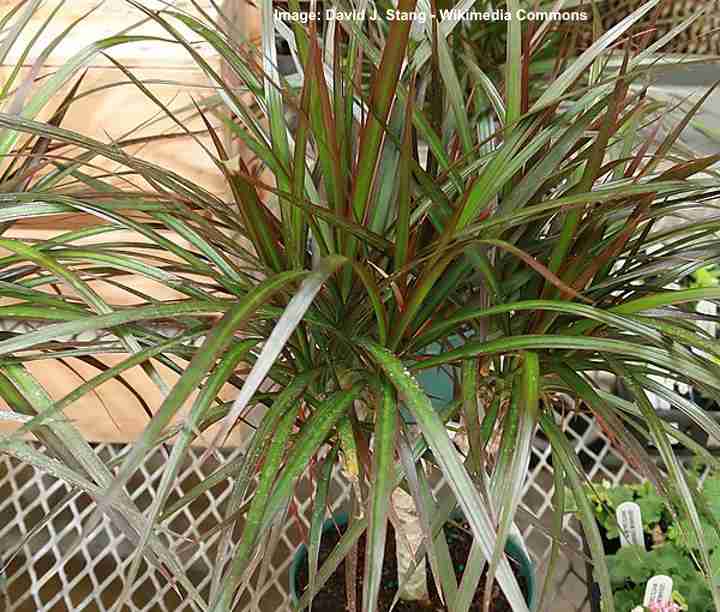
Another plant that tolerates tiny amounts of light and hardly any watering is the dragon tree. When growing in containers indoors, this low-light tree has thin woody stems and long thin leaves that taper to a point. Some varieties of dragon trees have dark green foliage and others have sunlight-yellow and green leaves.
These tall houseplant trees are excellent as floor décor to create height and greenery in a dim corner of any modern design.
Cornstalk Plant (Dracaena fragrans)
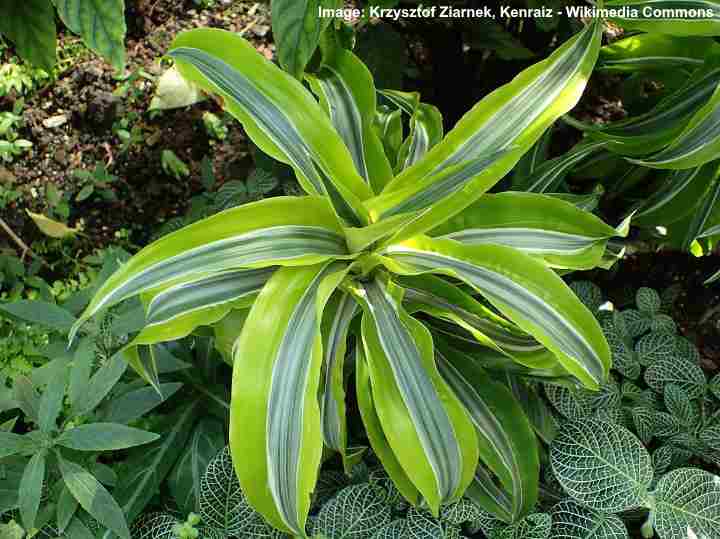
In the picture: Dracaena fragrans ‘Limelight’
Cornstalk plants survive well in offices and rooms where there is no or little natural light. These slow-growing shrubby plants are related to dragon trees. The stems and leaves of cornstalk plants are thicker than dragon trees. These hardy bushy indoor plants grow in many different conditions—from very low light to bright, indirect sunlight.
Also called the ‘happy plant,’ cornstalk cultivars also have brightly-colored variegated foliage.
Spider Plant (Chlorophytum comosum)

Spider plants are popular indoor plants for offices, hanging baskets, and rooms with no or little sunlight. Spider plants have long, thin tapering leaves and arch and cascade over the pot. Although they grow in bright conditions, these plants feel just at home under fluorescent, incandescent, or LED lighting.
Spider plants are also one of the easiest houseplants to propagate. Baby spider plants grow on the ends of long stems. You only have to snip them off the stem and plant them in a small pot with well-draining soil.
Peace Lily (Spathiphyllum)

Peace lilies are no-fuss, low-maintenance, flowering houseplants that enjoy low to medium light. Even if the only light they get is fluorescent in a room with no windows, they continue to produce green foliage and flower. These arum-lilies are not a true type of lily. They grow a yellowish-white flower surrounded by a pure white or greenish spathe.
English Ivy (Hedera helix)

Although English ivy can grow in bright locations, it prefers shady spots, protected from direct sunlight. The trailing vines also grow just fine in rooms with little light or only an artificial light source. The long thin stems have distinctively lobed leaves. English ivy grows best in hanging baskets away from direct, bright sunlight.
Maidenhair Fern (Adiantum)
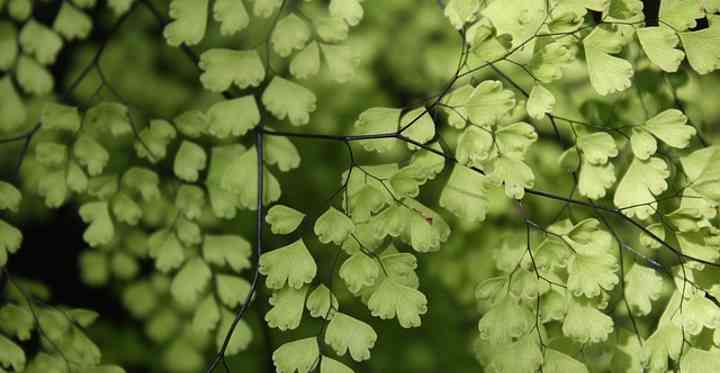
Maidenhair ferns require moderate care, but they prefer shadier locations to brighter locations. The delightful green foliage is made up of fan-shaped leaves on wiry black stems. To avoid killing the ferns, keep them out of bright light, give them plenty of humidity, and keep the soil moist.
Peperomia (Peperomia)
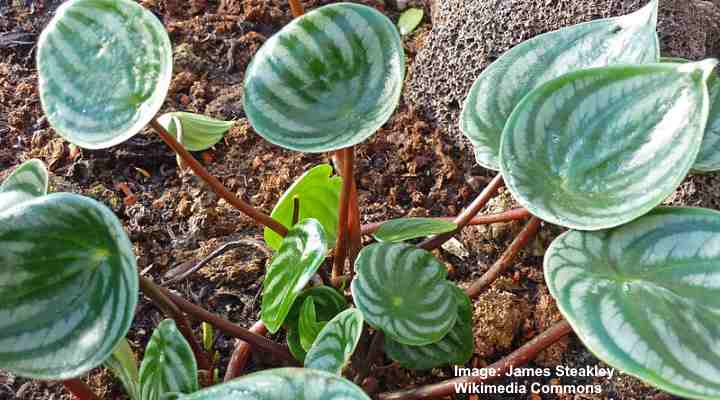
This image shows watermelon peperomia
Peperomia plants are easy care small tropical houseplants that are excellent for compact spaces where light is lacking. Although peperomias are at their best in medium to bright light, they can withstand low light. Many peperomia species have succulent like leaves, and they are quite drought resistant. They are also slow growers, so they are perfect houseplants for forgetful owners.
Peperomia plants are prized for the fascinating patterns on their leaves—excellent examples are the watermelon peperomia, red ripple peperomia, and Columbian peperomia.
Just remember that peperomias growing in low-light conditions may not have vibrant foliage.
Swiss Cheese Plant (Monstera deliciosa)
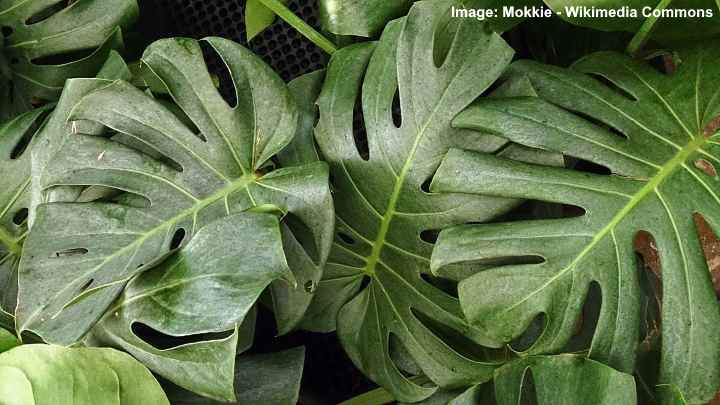
Monstera deliciosa
A Swiss cheese plant will grow in just about any room in your home, including ones with little sunlight. Large glossy heart-shaped split leaves and trailing aerial roots are features of this large indoor plant. Although Swiss cheese vines prefer bright, filtered sunlight, they will still grow in low-light—only not as vigorously.
Another type of Monstera plant that doesn’t mind dim conditions is the Monstera adansonii, also called Monkey Mask plant. Caring for Monstera adansonii is similar to Swiss cheese vines—water when the soil is partly dry and keep away from bright, direct sunlight.
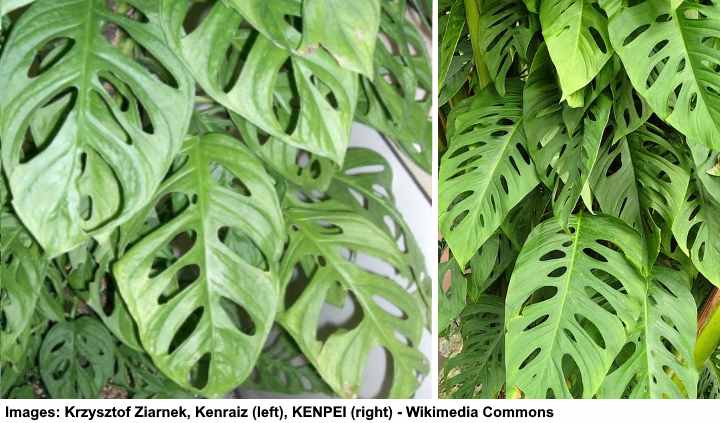
Monstera adansonii
Anthurium
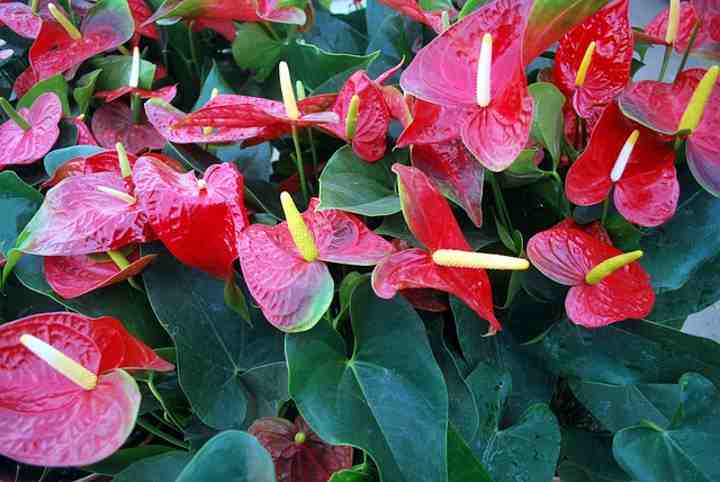
Many species of Anthurium plants grow in lower light conditions than other houseplants. It seems that placing these plants in shady spots and mild temperatures is the best way to care for them. Like other aroids, Anthurium plants have a waxy-looking colorful leaf called a spathe—in Anthuriums, the color is generally shiny lipstick red. In the middle is a spiked flower called a spadix. Even in very low light, the plants will continue to grow, only at a slower pace and with fewer flowers.
Related articles:
